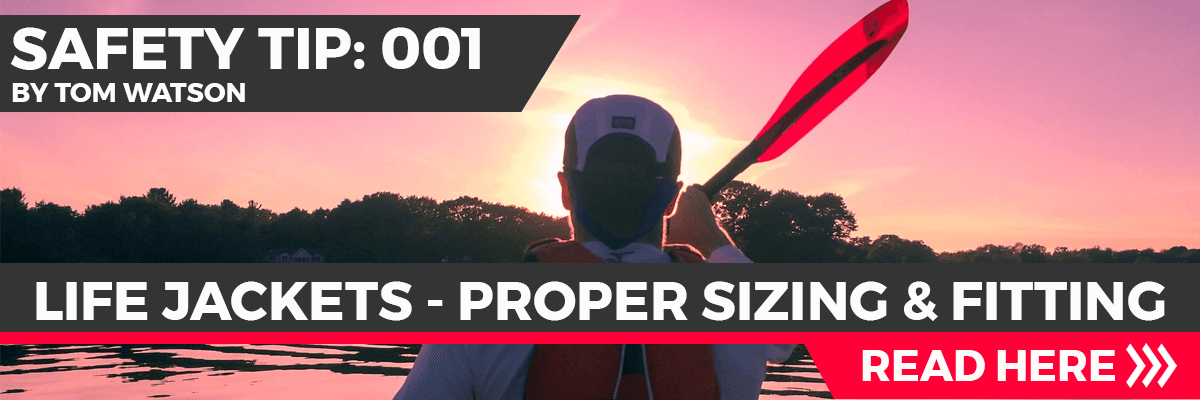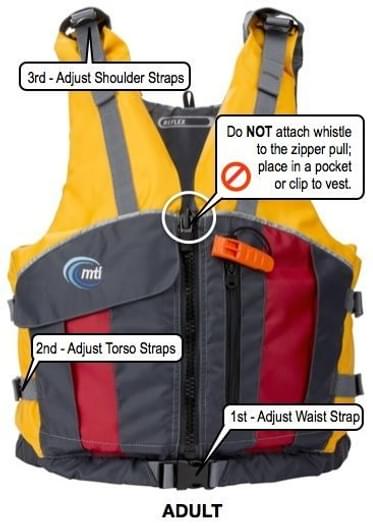Life Jackets - Proper Sizing & Fitting

Adhering to the fundamental safety rule that a lifejacket should always be worn when out on the water, ensuring a proper size and fit is critical.
Keeping you afloat with your head out of the water is a lifejacket’s primary function. It can also provide limited torso warmth, and a bright-colored vest may add in being seen by rescuers.
Proper fit is key to a life jacket performing as designed. If it’s too small, you won’t stay afloat; if too large, it will ride up over your face or otherwise reposition.
It should be snug, like a glove, yet flexible enough to go through multiple motions for your particular water activity.
For Adults, chest measurement is the critical factor in sizing. The length, placement and number of straps are key considerations in determining the proper size to wear. Youth/Children/Infants, are separate, distinct categories - weight is the most important consideration. Special head flotation support, crouch strap and grab loop are added features of a Children/Infants life jacket.
Here’s how to determine a proper fit:
- Put on and zipper up;
- Snug up waist strap first
- Snug up side/torso straps
- Cinch down and snug shoulder straps.
- Make initial comfort strap adjustments
- Raise arms up over head, have associate grab top of arm openings and gently pull upward - if jacket rises up into mouth/ears area - readjust and try again, or select a different size jacket.
Other safety considerations include: 1) do not attach whistle to zipper pull, if whistle catches on anything during a re-entry it can unzip jacket, possibly pulling it loose/off; 2) vest pockets, pouches provide mini-stowage, but over-stuffing can inhibit some re-entry efforts.
Set a good example for kids and fellow boaters, wear a proper-fitting life jacket!
Related Articles
What is the main difference between a dry suit and a semi-dry suit? Why is there's such a big difference…
Whenever you're paddling, there's safety in numbers and so it's generally not a good idea to paddle…
River obstacles are serious hazards on any waterway - from placid, slow-moving streams to raging,…
Where I am temperatures are dropping, so it's almost dry suit weather. With that here's a video with…





